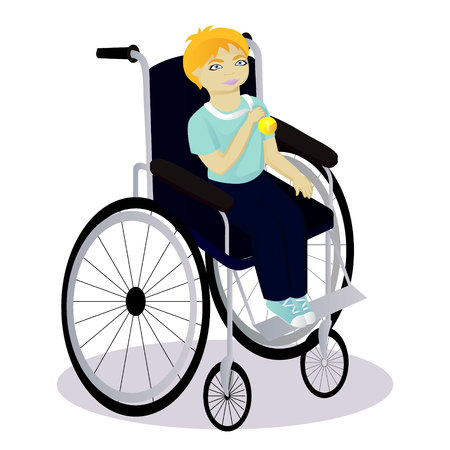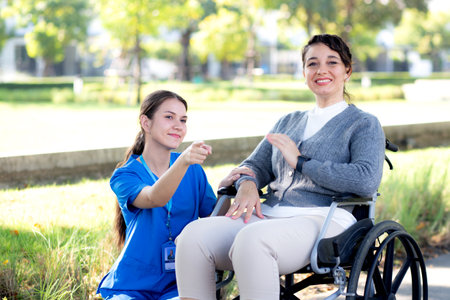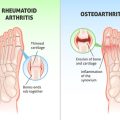Understanding Patient-Centred Care in the NHS
Patient-centred care is a guiding principle within the NHS, shaping how rehabilitation services are delivered across the UK. At its heart, patient-centred care means recognising each person as an individual with unique needs, preferences, and goals. This approach ensures that support is tailored not just to a diagnosis, but to what matters most to the patient and their loved ones. By listening actively and encouraging shared decision-making, healthcare professionals empower individuals to take an active role in their rehabilitation journey. In practice, this involves open communication, respect for cultural backgrounds, and consideration of the patient’s daily life and aspirations. Within the NHS framework, these principles underpin every step of selecting rehabilitation aids—ensuring that choices reflect both clinical evidence and the patient’s own voice. Ultimately, patient-centred care fosters trust, dignity, and a sense of partnership, laying a compassionate foundation for meaningful recovery and ongoing wellbeing.
Assessment of Individual Needs and Preferences
In the NHS, adopting a patient-centred approach to selecting rehabilitation aids begins with a thorough assessment of each individual’s unique needs and preferences. Rather than relying solely on clinical guidelines or standardised protocols, healthcare professionals are encouraged to engage in meaningful conversations with patients and their families. This ensures that recommendations for rehabilitation aids align closely with what truly matters to the person receiving care.
The Value of Personalised Assessments
Personalised assessments go beyond evaluating physical limitations or medical diagnoses. They encompass a holistic understanding of the patient’s daily routines, living environment, cultural background, and aspirations. By taking time to listen to patients’ stories and acknowledging their values, clinicians can co-create care plans that empower individuals to achieve their own goals—whether that is returning to gardening, maintaining independence in personal care, or being able to enjoy outings with family.
Key Elements in Assessment
| Assessment Area | Considerations | Impact on Aid Selection |
|---|---|---|
| Lifestyle | Hobbies, social life, work commitments | Aids tailored to support specific activities (e.g., mobility scooters for shopping trips) |
| Values | Personal beliefs, dignity, privacy | Respecting preferences around appearance or function (e.g., discreet hearing aids) |
| Goals | Short- and long-term objectives set by the patient | Aids chosen to facilitate goal achievement (e.g., handrails for safe bathroom use) |
| Home Environment | Living arrangements, space constraints, accessibility issues | Ensuring compatibility with home setup (e.g., compact walking frames for narrow hallways) |
| Cultural & Social Context | Language, traditions, community support networks | Selecting aids that respect cultural practices and encourage community participation |
Nurturing Trust and Shared Decision-Making
This personalised approach not only nurtures trust between healthcare professionals and patients but also fosters shared decision-making. Patients feel listened to and valued, while clinicians gain deeper insight into how best to support each person’s rehabilitation journey within the context of their everyday lives. In this way, the NHS continues to champion compassionate care that recognises every individual as unique and deserving of dignity throughout their rehabilitation process.

3. Collaboration with Multidisciplinary Teams
Within the NHS, selecting appropriate rehabilitation aids is seldom a solitary task. Instead, it thrives on the collective wisdom of multidisciplinary teams (MDTs), where rehabilitation professionals, patients, and carers all play pivotal roles. This collaborative ethos ensures that decisions are rooted in a deep understanding of each individual’s unique circumstances and preferences.
Central to this approach are regular MDT meetings, where physiotherapists, occupational therapists, speech and language therapists, nurses, and sometimes social workers come together to discuss patient needs. These sessions provide a safe space for everyone—including patients and their carers—to voice their perspectives and concerns. The patient’s lived experience is given particular weight, as their insight into daily challenges can guide professionals towards more practical and effective aid choices.
Carers, whether family members or support workers, also offer invaluable input. Their close observation of the patient’s routines often uncovers subtle barriers or opportunities for improvement that may otherwise be overlooked. By weaving together clinical expertise with real-life context, MDTs ensure that the selected aids are not only evidence-based but genuinely suited to promoting dignity and independence at home or in the community.
This collaborative process also supports continuity of care. As the patient’s situation evolves—perhaps following hospital discharge or changes in health status—the team revisits and revises aid selections as needed. Such flexibility is crucial in upholding person-centred care principles within the NHS framework.
4. Choice and Accessibility of Rehabilitation Aids
One of the defining features of patient-centred care within the NHS is the thoughtful selection and provision of rehabilitation aids to meet each individuals unique needs. The range of available aids is broad, encompassing everything from walking frames and wheelchairs to adaptive cutlery and communication devices. This diversity ensures that people of all ages, backgrounds, and levels of ability can find support tailored to their circumstances.
Reviewing Available Options
The NHS works closely with patients, families, and multidisciplinary teams to review and recommend appropriate rehabilitation aids. Occupational therapists and physiotherapists often carry out thorough assessments, taking into account not only clinical requirements but also personal preferences, home environments, and cultural considerations. The aim is always to enhance independence, dignity, and quality of life.
Common Types of Rehabilitation Aids Provided by the NHS
| Aid Type | Description | Typical Use Case |
|---|---|---|
| Walking Aids | Includes canes, crutches, rollators, and walking frames. | For those with mobility challenges or recovering from injury. |
| Wheelchairs | Manual or powered options tailored to user needs. | For individuals with significant mobility limitations. |
| Bathing & Toileting Aids | Grab rails, shower seats, raised toilet seats. | To promote safety and independence in personal care. |
| Adaptive Kitchenware | Easy-grip cutlery, non-slip mats, kettle tippers. | For those with reduced hand strength or dexterity. |
| Communication Devices | Speech-generating devices or amplified phones. | Supporting people with speech or hearing impairments. |
Ensuring Accessibility for All
The NHS recognises that accessibility extends beyond simply providing equipment. To address barriers such as language differences, physical access challenges, or socioeconomic inequalities, services are continually reviewed and adapted. Many local NHS Trusts offer home visits for assessments and training sessions for using new aids safely. In addition, translation services are available to ensure information is clear and comprehensive for everyone involved.
A Collaborative Approach to Tailoring Support
Ultimately, patient-centred selection of rehabilitation aids within the NHS is not just about matching an individual with a device—it is about working collaboratively to understand goals, respect preferences, and foster confidence in daily living. By reviewing options together and ensuring accessibility at every step, the NHS supports people to live as independently as possible in their own communities.
5. Supporting Shared Decision-Making
At the heart of patient-centred care within the NHS is a commitment to shared decision-making, particularly when selecting rehabilitation aids. This approach recognises the importance of patients as experts in their own lives, valuing their insights and preferences alongside clinical expertise. Creating space for open and respectful conversations ensures that individuals feel truly heard throughout their rehabilitation journey.
Empowering Patients Through Information
A vital strategy is providing clear, accessible information about available rehabilitation aids—ranging from mobility equipment to communication devices. NHS professionals are encouraged to use plain English, avoid jargon, and offer resources in different formats, such as leaflets or digital guides. This helps patients and their families understand all options and ask informed questions.
Encouraging Active Participation
Clinicians can foster empowerment by inviting patients to share their goals, concerns, and daily routines. Techniques like motivational interviewing or using structured decision aids support individuals in articulating what matters most to them. Involving carers and family members in discussions is also valued in British healthcare culture, recognising the role of social support networks.
Respecting Individual Values and Preferences
True shared decision-making means acknowledging cultural backgrounds, personal values, and lifestyle needs. Whether a patient prefers a discreet walking aid for public outings or seeks technology that supports independent living at home, these perspectives should guide choices. Health professionals are encouraged to listen with empathy, validate experiences, and adapt recommendations accordingly.
Through these strategies, the NHS upholds dignity and autonomy for all individuals navigating rehabilitation. By ensuring every voice is respected and involved in decision-making, care becomes not only clinically effective but deeply compassionate—reflecting the best traditions of British healthcare.
6. Addressing Barriers and Promoting Inclusivity
When selecting rehabilitation aids within the NHS, it is crucial to recognise and address both practical and cultural barriers that may affect patients’ access to appropriate support. Many individuals face challenges such as limited mobility, lack of reliable transportation, or financial constraints, which can make accessing resources more difficult. Additionally, language differences, varying levels of health literacy, and differing cultural beliefs about health and disability can also impact the uptake and effectiveness of rehabilitation aids.
Considering Practical Barriers
Practical obstacles often include geographical distance from specialist services, waiting times for assessments, or the complexity of navigating healthcare systems. To mitigate these issues, NHS teams can consider offering outreach clinics, home visits, or utilising telehealth solutions where appropriate. Simplifying referral pathways and ensuring clear communication at each stage can make a meaningful difference for patients and their families.
Cultural Sensitivity in Aid Selection
Cultural competence is essential when recommending rehabilitation aids. Understanding a patient’s background, beliefs, and preferences allows clinicians to suggest options that align with their values and daily routines. For example, some mobility aids may need to be adapted to suit traditional homes or community settings. Collaboration with cultural liaison officers or community advocates can help build trust and ensure recommendations are sensitive and respectful.
Promoting Equitable Access
Equity must remain at the heart of patient-centred care within the NHS. This involves proactively identifying groups who may be at risk of exclusion—such as those from minority ethnic backgrounds, people living in rural areas, or individuals with complex social needs—and tailoring approaches accordingly. Providing information in multiple languages, engaging local community organisations, and ensuring staff receive ongoing training in equality and diversity are all vital steps towards inclusivity.
Empowering Communities
Ultimately, promoting inclusivity means working in partnership with communities to co-design services that meet their unique needs. By listening to patient voices and involving them in decision-making processes, the NHS can create more responsive and accessible rehabilitation services. Through these efforts, we move closer to a system where every individual has the opportunity to regain independence and live life to the fullest.


